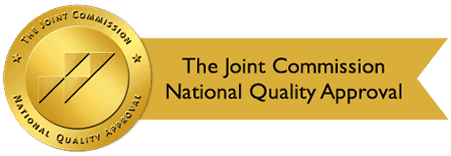By: Design for Change
Categories:
How Common Is Prescription Painkiller Misuse Among Chronic Pain Patients?
You are here:In the United States, an over-reliance on opioid medications has led to alarming increases in painkiller misuse and addiction. Physicians closely monitor the frequency and dose of painkillers, so how can this happen?
Two factors are largely responsible for painkiller misuse and addiction. First, opioids are often improperly used and are widely diverted. Secondly, the main source of diverted opioids is physician-prescribed medications. Furthermore, many physicians are not confident about how to safely prescribe opioids or detect abuse of the meds among their patients.
What Are Diverted Opioids?
Opioid medications (painkillers) produce analgesia and euphoria. Repeated use or misuse for pain or pleasure leads to higher tolerance and craving for the drug’s effects. Even mild pain can trigger the association between the drug and pain relief. Also, individuals who intentionally misuse painkillers to get high associate the pills with the euphoria they crave. Overall, these learned or conditioned responses to painkillers have contributed to the opioid epidemic raging across America today.
Diverted opioids are those that are unlawfully channeled from legal sources to illicit markets. For instance, giving drugs to people they were not prescribed for, selling them on the streets, or doctor shopping to obtain more of the drugs for illicit use.
Drug diversion also occurs when healthcare staff, patients, or visitors take a patient’s prescribed painkiller for illicit purposes. In general, opioids are the most commonly diverted drug, according to the Journal of the American Medical Association (JAMA).
Prevalence of Prescription Painkiller Misuse
The prevalence of prescription painkiller misuse in the U.S. continues to rise. Studies show that about 30% of chronic pain patients become addicted to their prescription opioids. To combat these high statistics, new prescribing guidelines are in place to help reduce prescription painkiller misuse. They include:
- Alternative strategies for pain relief should be used before prescribing opioids.
- Prescribers must explain possible risks to patients and help determine whether the risks outweigh the benefits.
- Make sure patients are not also taking benzodiazepines which are highly addictive.
- Opioids should not be the first and only consideration for pain relief.
- Prescribe low doses of immediate-release opioids.
Typically, patients with chronic pain will benefit from combined strategies such as physical therapy, mindfulness and massage therapy, acupuncture, or chiropractic adjustments. If you struggle with chronic pain, talk to your doctor about these therapies before taking opioids.
Signs of Prescription Painkiller Misuse
Painkiller misuse and abuse are out of control. Easy access to the pills and the potency of most painkillers have fueled a national health crisis. Fatal overdoses involving opioids rose from 49,860 in 2019 to 81,806 in 2022, according to the National Institute on Drug Abuse (NIDA).
So, if you or someone you know uses prescription opioids, familiarize yourself with the side effects and signs of painkiller misuse. The knowledge may help you avoid the agony of opioid addiction.
Opioid side effects:
- Dry mouth
- Constipation
- Nausea and vomiting
- Sleepiness
- Confusion
- Itching
- Low testosterone levels
- Lower sex drive
- Lack of energy
- Weakness
- Increased sensitivity to pain
Signs of painkiller misuse or addiction:
- Social isolation
- Poor performance at school or work
- Secretive behavior
- Change in personality
- Mood swings
- Irritability
- Nervousness
- Tendency to lie or steal
- Increased drug-seeking behavior
- Doctor shopping
- Cravings for the drug
- Withdrawal symptoms
- Continued use despite the consequences
Prescription painkiller misuse leads to opioid use disorder (OUD) that requires professional addiction treatment. All in all, it impacts a person’s physical and mental health, damages relationships, and diminishes overall quality of life. Additionally;, job loss, financial ruin, and broken families are not unusual when OUD occurs.
Recovery from prescription painkiller misuse involves a treatment plan that includes medication-assisted treatment (MAT), support groups, and counseling.
Prescription Painkiller Misuse and Addiction Is Treatable
With the right support and treatment, prescription painkiller misuse is treatable. At Design for Change Recovery, our highly skilled staff will be with you through each stage of treatment. We provide a full continuum of care including different levels of treatment that align with your unique needs.
Our evidence-based opioid treatment program consists of several levels of care including:
- Outpatient Programs
- Intensive Outpatient Programs (IOP)
- Inpatient Programs
- Intensive Inpatient Programs
- Partial Hospitalization (PHP)
- Extended Care Services
The components of our client-centric programs include:
- Detoxification
- Cognitive-Behavioral Therapy
- Dialectical Behavioral Therapy
- Medication-Assisted Treatment
- Group and Individual Counseling
- Dual-Diagnosis Treatment
- Motivational Interviewing
- Psychodrama Therapy
- Psychodrama Therapy
- Bio-Sound Therapy
- Experiential Therapy
- Music and Art Therapy
- Mindfulness and Meditation
- Nutritional Education
- Relapse Prevention Strategies
- Family Therapy
- Aftercare Services
Our Lancaster, CA facility is located in a beautiful and serene setting that promotes relaxation and healing. We are fully licensed, JCAHO-accredited, and in-network with major insurance companies. This means you are assured of getting the high level of care you need and deserve.
Contact us today to learn more about opioid addiction treatment at Design for Change Recovery.
Sources;
health.harvard.edu/ – New Guidelines on Opioids for Pain Relief: What You Need to Know
nida.nih.gov. – Drug Overdose Deaths: Facts and Figures
cdc.gov/ – Opioid Therapy and Different Types of Pain


